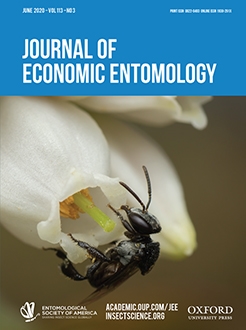Wild and managed bees provide effective crop pollination services worldwide. Protected cropping conditions are thought to alter the ambient environmental conditions in which pollinators forage for flowers, yet few studies have compared conditions at the edges and center of growing tunnels. We measured environmental variables (temperature, relative humidity, wind speed, white light, and UV light) and surveyed activity of the managed honey bee, Apis mellifera L.; wild stingless bee, Tetragonula carbonaria Smith; and wild sweat bee, Homalictus urbanus Smith, along the length of 32 multiple open-ended polyethylene growing tunnels. These were spaced across 12 blocks at two commercial berry farms, in Coffs Harbour, New South Wales and Walkamin, North Queensland, Australia. Berry yield, fresh weight, and other quality metrics were recorded at discrete increments along the length of the tunnels. We found a higher abundance and greater number of flower visits by stingless bees and honey bees at the end of tunnels, and less frequent visits to flowers toward the middle of tunnels. The center of tunnels experienced higher temperatures and reduced wind speed. In raspberry, fruit shape was improved with greater pollinator abundance and was susceptible to higher temperatures. In blueberry, per plant yield and mean berry weight were positively associated with pollinator abundance and were lower at the center of tunnels than at the edge. Fruit quality (crumbliness) in raspberries was improved with a greater number of visits by sweat bees, who were not as susceptible to climatic conditions within tunnels. Understanding bee foraging behavior and changes to yield under protected cropping conditions is critical to inform the appropriate design of polytunnels, aid pollinator management within them, and increase economic gains in commercial berry crops.
How to translate text using browser tools
19 March 2020
Bee Visitation and Fruit Quality in Berries Under Protected Cropping Vary Along the Length of Polytunnels
Mark A. Hall,
Jeremy Jones,
Maurizio Rocchetti,
Derek Wright,
Romina Rader
ACCESS THE FULL ARTICLE
It is not available for individual sale.
This article is only available to subscribers.
It is not available for individual sale.
It is not available for individual sale.

Journal of Economic Entomology
Vol. 113 • No. 3
June 2020
Vol. 113 • No. 3
June 2020
Apis mellifera
blueberry
pollinator
raspberry
Tetragonula carbonaria




